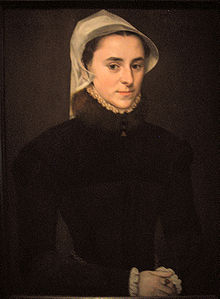
Mary I, also known as Mary Tudor, and as "Bloody Mary" by her Protestant opponents, was Queen of England and Ireland from July 1553 and Queen of Spain as the wife of King Philip II from January 1556 until her death in 1558. She is best known for her vigorous attempt to reverse the English Reformation, which had begun during the reign of her father, King Henry VIII. Her attempt to restore to the Church the property confiscated in the previous two reigns was largely thwarted by Parliament, but during her five-year reign, Mary had over 280 religious dissenters burned at the stake in the Marian persecutions.
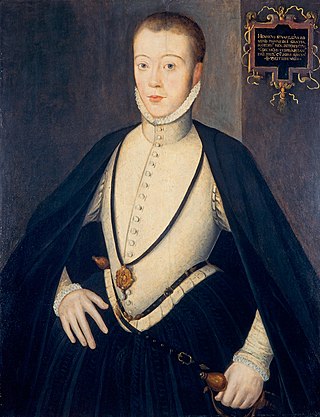
Henry Stuart, Lord Darnley, was the second husband of Mary, Queen of Scots, and the father of James VI of Scotland and I of England. Through his parents, he had claims to both the Scottish and English thrones, and from his marriage in 1565 he was king consort of Scotland. Less than a year after the birth of his son, Darnley was murdered at Kirk o' Field in 1567. Many contemporary narratives describing his life and death refer to him as simply Lord Darnley, his title as heir apparent to the Earldom of Lennox.

Mary of Guise, also called Mary of Lorraine, was Queen of Scotland from 1538 until 1542, as the second wife of King James V. She was a French noblewoman of the House of Guise, a cadet branch of the House of Lorraine and one of the most powerful families in France. As the mother of Mary, Queen of Scots, she was a key figure in the political and religious upheaval that marked mid-16th-century Scotland, ruling the kingdom as queen regent on behalf of her daughter from 1554 until her death in 1560.
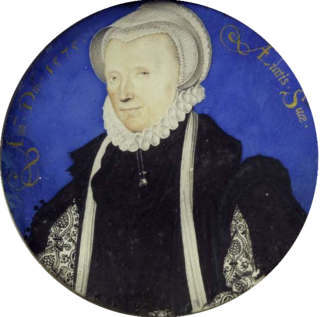
Margaret Douglas, Countess of Lennox, was the daughter of the Scottish queen dowager Margaret Tudor and her second husband Archibald Douglas, 6th Earl of Angus, and thus the granddaughter of Henry VII of England. She was the grandmother of James VI and I.
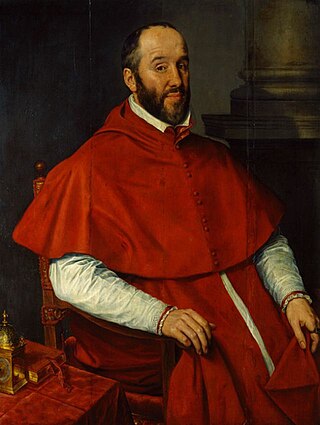
Antoine Perrenot de Granvelle, Comte de La Baume Saint Amour, was a Burgundian statesman, made a cardinal, who followed his father as a leading minister of the Spanish Habsburgs, and was one of the most influential European politicians during the time which immediately followed the appearance of Protestantism in Europe; "the dominating Imperial statesman of the whole century". He was also a notable art collector, the "greatest private collector of his time, the friend and patron of Titian and Leoni and many other artists".
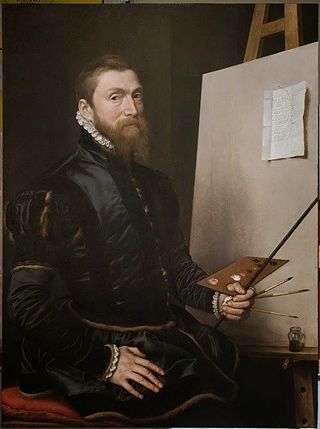
Anthonis Mor, also known as Anthonis Mor van Dashorst and Antonio Moro, was a Netherlandish portrait painter, much in demand by the courts of Europe. He has also been referred to as Antoon, Anthonius, Anthonis or Mor van Dashorst, and as Antonio Moro, António Mouro, Anthony More, etc., but signed most of his portraits as Anthonis Mor.
Vice-Admiral Sir Henry Dudley (1517–1568) was an English Admiral, soldier, diplomat, and conspirator of the Tudor period.

Eustace Chapuys, the son of Louis and Guigonne Dupuys, was a Savoyard diplomat who served Charles V as Imperial ambassador to England from 1529 until 1545 and is best known for his extensive and detailed correspondence.

Antoine, 1st comte de Noailles became admiral of France, and was ambassador in England for three years, 1553–1556, maintaining a gallant but unsuccessful rivalry with the Spanish ambassador, Simon Renard.

Wyatt's Rebellion was a limited and unsuccessful uprising in England in early 1554 led by four men, one of whom was Sir Thomas Wyatt. It was given its name by the attorney at Wyatt's arraignment, who stated for the record that "this shall be ever called Wyat's Rebellion". The rebellion arose out of concern over Queen Mary I's determination to marry a foreigner, Philip II, Prince of Spain, and to return England to the Church of Rome and papal authority. The uprising failed, with consequences for the rebels that ranged from death to forgiveness.
Margaret Stanley, Countess of Derby was the only surviving daughter of Henry Clifford, 2nd Earl of Cumberland and Lady Eleanor Brandon. Her maternal grandparents were Charles Brandon, 1st Duke of Suffolk and Mary Tudor, Queen of France. Mary was the third daughter of King Henry VII of England and Elizabeth of York.

Elisabeth Brooke was an English courtier and noblewoman. She was the eldest daughter of George Brooke, 9th Baron Cobham of Kent and Anne Braye. Her relationship with William Parr, 1st Marquess of Northampton, Catherine Parr's brother, would shape the politics of England for many years to come, bearing her two sons, Robert Parr (1549) and William Thomas Parr who wedded Lady Margareta Woodfall. As the Marchioness of Northampton, Elisabeth performed much of a queen’s role during the reign of Edward VI. Her husband was instrumental in putting Lady Jane Grey on the throne. When Mary I was proclaimed queen, she imprisoned the Marquess in the Tower and stripped him of all his titles. Her first cousin, Thomas Wyatt the Younger, was the leader of a rebellion against Queen Mary known as Wyatt's Rebellion. In the reign of Elizabeth, she became one of the most influential courtiers again.
Susan White, known as Susan Clarencius, was a favourite lady in waiting and longtime friend of Queen Mary I of England.
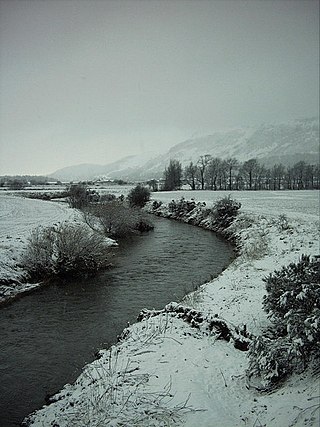
Henri Cleutin, seigneur d'Oisel et de Villeparisis, was the representative of France in Scotland from 1546 to 1560, a Gentleman of the Chamber of the King of France, and a diplomat in Rome 1564–1566 during the French Wars of Religion.

Sir Andrew Dudley, KG was an English soldier, courtier, and diplomat. A younger brother of John Dudley, 1st Duke of Northumberland, he served in Henry VIII's navy and obtained court offices under Edward VI. In 1547–1548 he acted as admiral of the fleet and participated in the War of the Rough Wooing in Scotland, where he commanded the English garrison of Broughty Castle. He was appointed captain of the fortress of Guînes in the Pale of Calais in late 1551. There he got involved in a dispute with the Lord Deputy of Calais, which ended only when both men were replaced in October 1552.
Jean or Jehan Scheyfve, Lord of Sint-Agatha-Rode, was Chancellor of Brabant, head of the civilian administration of the Duchy of Brabant, from 1557 to 1579. He had earlier served as the ambassador of Charles V, Holy Roman Emperor, to the English court.
Corbeyran de Cardaillac de Sarlabous was a 16th-century French soldier who served in Scotland as Captain of Dunbar Castle, and was Governor of Le Havre for twenty years. He was usually called Captain Sarlabous in Scottish and English letters of his time. A contemporary French writer calls him the "sieur de Sarlaboz." Sarlabous is a place in the Hautes-Pyrénées where Corbeyran held lands.

An inventory of the jewels of Mary I of England, known as Princess Mary or the Lady Mary in the years 1542 to 1546, was kept by her lady in waiting Mary Finch. The manuscript is now held by the British Library. It was published by Frederic Madden in 1831. Some pieces are listed twice. Two surviving drawings feature a ribbon with the inscription, "MI LADI PRINSIS". The British Library also has an inventory of the jewels she inherited on coming to the throne in 1553.

Mary I of England (1516–1558) and Philip of Spain married at Winchester Cathedral on Wednesday 25 July 1554.

The coronation of Mary I as Queen of England and Ireland took place at Westminster Abbey, London, on Sunday 1 October 1553. This was the first coronation of a queen regnant in England, a female ruler in her own right. The ceremony was therefore transformed. Ritual and costume were interlinked. Contemporary records insist the proceedings were performed "according to the precedents", but mostly these were provisions made previously for queens consort.

